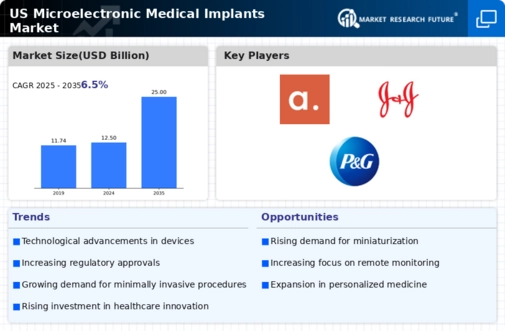The US Microelectronic Medical Implants Market is characterized by rapid technological advancements and a growing demand for minimally invasive medical solutions. As healthcare providers increasingly focus on enhancing patient outcomes through innovative treatment options, the competition among companies providing microelectronic implants has intensified.
This market is influenced by factors such as aging populations, rising incidences of chronic diseases, and increased healthcare expenditure. The integration of advanced technologies, including wireless communication and intelligent sensors, has further broadened the scope for development and differentiation.
Companies are leveraging these opportunities to advance their product portfolios, engage in strategic partnerships, and invest in research and development, making the landscape dynamic and competitive.
Eminent BioSystems has established a noteworthy position in the US Microelectronic Medical Implants Market with its focus on high-quality and reliable implantable medical devices. The company is recognized for its commitment to innovation, particularly in the development of advanced bio-sensing technologies.
Eminent BioSystems has developed a strong product line, which includes devices utilized in neuromodulation and cardiac rhythm management that cater to the needs of patients seeking quality healthcare solutions. With a presence across various states in the US, the company's operational efficiency and robust supply chain management provide a competitive edge, enhancing its ability to meet market demands effectively. Their emphasis on regulatory compliance ensures that products meet the highest safety standards, instilling trust among healthcare professionals and patients alike.
Implantable Provider Group is a key player in the US Microelectronic Medical Implants Market, recognized for its comprehensive range of implantable devices and services. The company specializes in the design and manufacturing of microelectronic implants for various applications, including orthopedic, cardiac, and neurological disorders.
Implantable Provider Group's strengths lie in its innovative product offerings and tailored solutions to healthcare providers, which position it as a trusted partner in the medical community. The company has engaged in strategic mergers and acquisitions, enhancing its technological capabilities and expanding its market reach across the US.
With a solid reputation for quality and continuous improvement, Implantable Provider Group remains dedicated to advancing patient care through its cutting-edge technologies and strong customer relationships, giving it a competitive advantage in the rapidly evolving market landscape.













